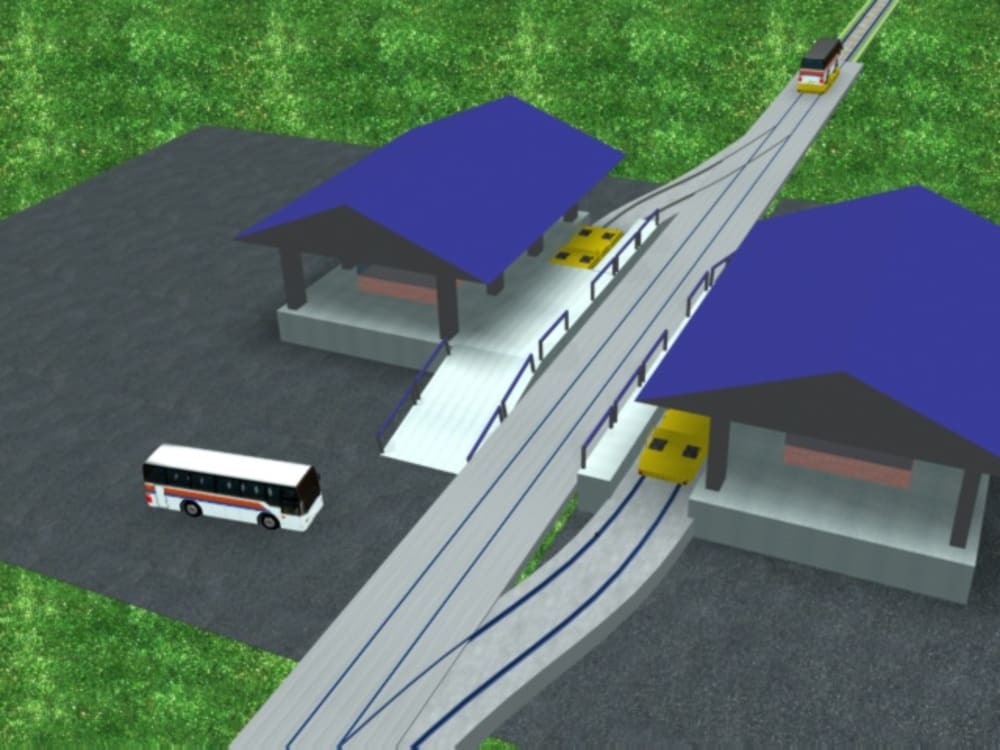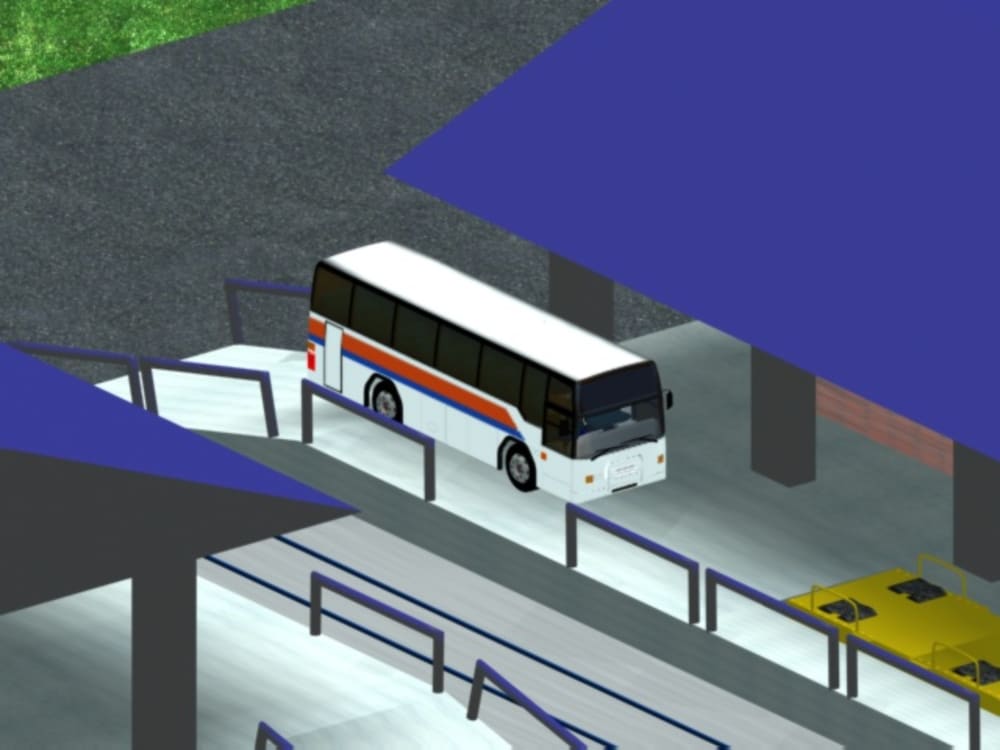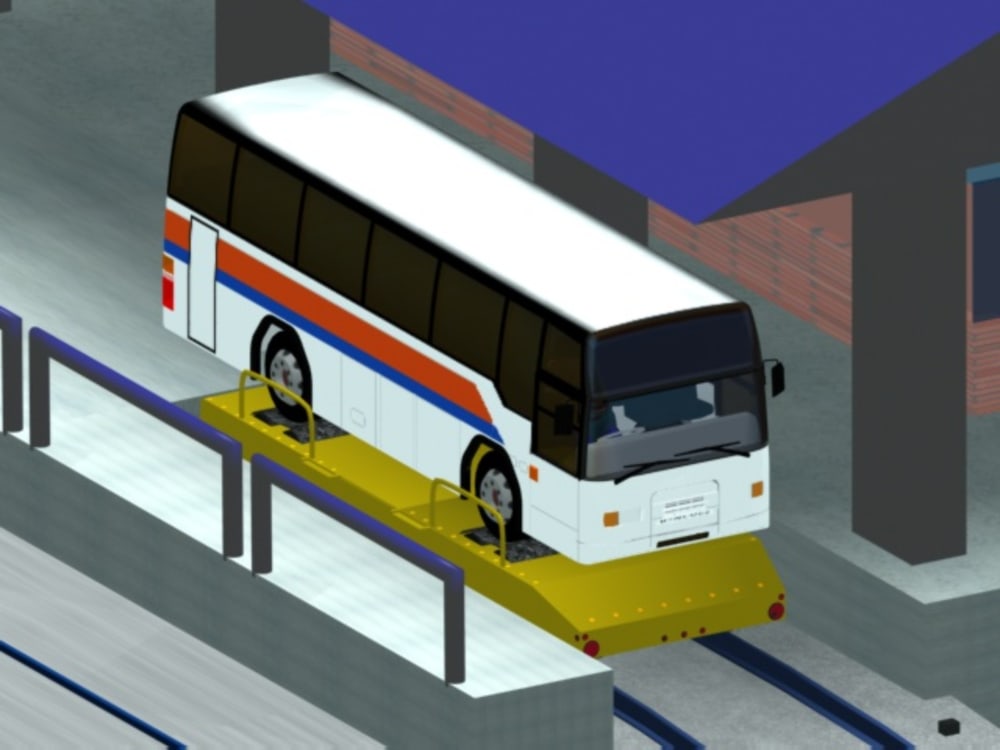The Rail Bus system provides intermodal mass transit with a single-vehicle system. Current intermodal passenger transportation involves locating infrastructure where different forms of transportation share common (often large) facilities, where passengers must switch vehicles in order to access another mode. This system adds the dimension of rail travel to an existing bus system and prevents the need to change vehicles for road or rail destination points with relatively small infrastructure and right-of-way access required for setup and operation. Transit buses can provide railway operating efficiencies while taking passengers where commuter trains cannot.
Benefits include:
• Areas unable to support a commuter train network can achieve the same mass transit benefits.
• Offers ‘stepping stone’ for a growing community with future commuter rail system plans, or a supplement to an existing one.
• Allows intermodal travel for the physically challenged where passengers can be picked up at, or close to, home and travel to road or rail route destinations without having to change vehicles for the duration of the trip, avoiding the hassle to the traveler and system delays with traditional bus-rail transportation.
• Emergency mass evacuation improved with ability to pick up passengers in high population areas, away from rail access, and utilize rail routes to transport them away from the vicinity off of congested roads.
• Emergency, military and other specialized vehicles can be easily modified to use the rail network.
• Abandoned rail corridors can be reused, taking advantage of passages through a city that would be impractical to create today.
This system is scalable and applicable to any urban/suburban area with existing rail networks, either in lieu of or as a supplement to commuter rail, so market potential and costs for the Rail Bus system would be best evaluated by ridership, capacity and passenger-miles in comparison to existing bus/rail ridership in a given community. By using existing buses, overall capitol and operational costs of the Rail Bus infrastructure and platforms compared to those of a dedicated commuter train could be an order of magnitude lower.
The infrastructure portion of the system is comprised of a sheltered passenger facility with means for buses to be safely and securely engaged and disengaged automatically to platforms upon entry and exit of each station. After securement, with the tires located over the roller drive system of the platform similar to a chassis dynamometer, the bus will propel itself and the platform along the tracks. Standardized features would be incorporated as a method of bus/ platform securement. Platform features allow operation in either direction on rail, as well as adjustability to accommodate different bus wheelbases. Modern telematics provide the ability to monitor and control safe operation of the system from a centralized location.
System infrastructure would use common building materials of standard dimensions, including the rail and track bed needed for rail right-of-way access. The platform structure would be manufactured primarily of steel with the drive system comprised of existing components and modifications to currently available rail suspensions and chassis dynamometer products.
Like this entry?
-
About the Entrant
- Name:Steve Spata
- Type of entry:individual
- Software used for this entry:3D Studio
- Patent status:pending








